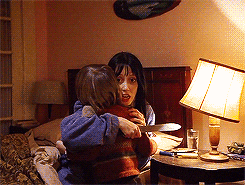“We’ve always done it this way. It’s an industry standard.”
We hate hearing that.
Doing what’s always been done, just because that’s the way it is, is the quickest way to kill a business.
While the standard Request for Proposal (RFP) won’t kill all businesses, it’s definitely killing some, by hacking away at relationships and slaughtering creativity.

RFPs may still have a place in the business world, but if we don’t rethink them, the brands who stubbornly hold onto them will face serious issues in the coming years.
Disruption is all around us, including the world of RFPs.
First, let’s define this RFP so we’re all on the same page. Then we can dismantle the bureaucracy.
What is an RFP? A request for proposal (RFP) is a tool used by businesses to secure vendors. It’s a document that solicits proposal by a company interested in procuring a commodity, service, or valuable asset. Basically a company puts out the notice that they want to find a vendor for a solution. This goes out to potential suppliers they may know, who then submit business proposals. It’s often made through a bidding process. It’s cumbersome and very traditional.
What’s So Terrible About RFPs and This Entrenched Process?
RFPs Assume “They” Have Everything They Need
On both sides of the RFP aisle, we have the idea that “they” have everything “they” need.
First, if your company puts out the call for vendors to submit a proposal, you’re likely to assume what they give you has everything you you need. But what happens if you don’t know exactly what you need? What if you’ve missed something?
Simply calling for RFPs will only bring you expected solutions. Pages and pages of text based on predetermined questions won’t help uncover your deeper needs or surprising obstacles.
On the other side of the RFP coin, the business submitting the RFP assumes their document has everything the recipient needs. Even if the RFP’s questions are answered, it still falls short in how that brand can add unique value for their potential client.
Just because your team knows what they want from a project, they may not understand how to create that unique, extra value that’s going to give your business a real competitive edge.
For instance, if a business wants to open up an RFP for a new email marketing tool, they may get RFP documents from SaaS companies who provide the tool and marketing agencies that provide pro email marketing strategy.
But have they considered conversational marketing and solutions like chatbots, live chat, social messaging platforms or texting? In 2019, those technologies need to be a part of your client communications, supplementing and complementing email marketing. It’s unlikely your RFP allows companies to see the bigger picture or suggest an improved change in the direction or scope of your original project.
The bottom line is: RFPs can’t see the big picture and as a result, miss huge, strategic opportunities. Don’t miss the revenue-generating forest because you created an RFP for some trees.
RFPs Remove the Conversational Human Element
Too often a company puts out an RFP with the expectation that they won’t have to talk to a human. But people do business with people they get to know, like and trust. Going back to point one, avoiding a conversation with a person leads to assumptions.
And you don’t want to assume.

Active listening and real live conversations can help curb assumptions, uncover real needs and develop relationships.
On the flipside, when a vendor provides the information, they seem to have the same expectation. “We’ll give them what they need and it’ll read like a terrific plan and they’ll hire us!”
But this flawed process requires humans to skim long documents, as each vendor says essentially the same thing with no personality or uniqueness.
Conversations build relationships. Relationships lead to successful partnerships with better vendors.
BONUS: Some people are really good at tell you exactly what you want to hear. Having a human conversation gives you the opportunity to see nonverbal cues and ask deeper, probing questions. There’s a reason we don’t hire based solely on a resume.
Most Services Don’t Have a Hard Price Without a Conversation
B2B procurement isn’t just a consumer transaction where there’s a price tag with a sale amount for a specific good. Most of the time, it’s a long-term relationship where there’s a committment to a set amount of services and the vendor builds upon that with assed value.
This often includes discussions about the problem you’re trying to solve, the solutions available, options and ideas, brainstorming and more. Successful strategy takes time. It’s not a thing in a box you can slap a label on. Just because it isn’t cut-and-dry, doesn’t mean it’s terrible. Base pricing may help you begin to understand your budget, but stay flexible (to a point) as you begin to see the value in adding services or projects you hadn’t previously thought about.
Most RFPs Are Just a List of Requirements
Give me your lowest expectations and I’ll probably meet them. But dig deep and uncover what you really need, and I may surprise you. –Someone super smart
Providing multiple pages of requirements for a new tool you think you need will not get you the best outcome. You just don’t know what you don’t know. So stop being so picky.

When you’re shopping for a new CMS and issue a requirements list, you’ll find yourself in an arms race among product vendors. You’ll get a bunch of proposals that all look the same. Each vendor will tell you that their product does all that and more. Then, a slick salesperson will talk to you and give you a demo that works perfectly for a made-up company that neatly fits the system specs. The problem? It looks nothing like your organization and doesn't have your business rules.
Once you start implementing your chosen product, you find out how much customization is required for the things you need. Suddenly it gets more expensive. You’ll find that you are just another cog in the machine, but it’s too late because you picked the system and don’t want to admit it’s not right, and you already paid for it, so you’re stuck.

Instead, provide scenarios or use cases about how the system will be used and what problems it needs to solve. By doing this, the potential partners will be able to tell you how their system – and their implementation of it – will meet your specific needs. The pricing will be more accurate. Every piece of software needs to be customized. But how much and level of complexity vary widely. By leveraging real conversation and putting humans back into your selection process, you’ll learn where your business falls on that customization spectrum and be able to set expectations (and realistic budgets) accordingly.
Time to Give Up on RFPs?
Is it all bad? No. Of course not. RFPs still work for certain situations. We just need to make some changes. Here’s a look at why and how RFPs can work.
If You Have a Board, RFPs Help Align Everything
When you have multiple people in charge, you need to make sure everyone is rowing the same direction with the same expectations. Department heads, managers within those departments, executives and others all want to know what’s going on. But with that many different opinions and ideas, you can have a too many cooks in the kitchen situation, fast.

If you use your RFP as a starting point and a guiding principle, but consider other communication tools, you can better keep everyone aligned without excluding the chance to find the deeper solution to your needs.
RFPs Can and Should Be a Guard Rail and Goal Post Tool
This is the opposite of what Impulse Creative looks for: “Have this document done in 15 days with 140 copies double-bound book…”
That won’t work for us, and it shouldn’t work for you. Run from that kind of rigidity. It’s hurting your business.
Instead, look at RFPs as a way to frame the conversation. It’s a guard rail and goal post tool to help ensure we’re all on the same page and ready for a deeper conversation. When RFPs evolve into this type of guiding document, they have a chance to survive in this relationship economy we’re in right now.
So what do we do about it? Brands putting out the notice for an RFP should still allow a company the flexibility to show their expertise. Have conversations. Develop relationships. Look for a partner, not just a transaction.
Reach beyond traditional requests for proposals and find what you actually need, not just what you’re looking for.
 Remington Begg
Remington Begg